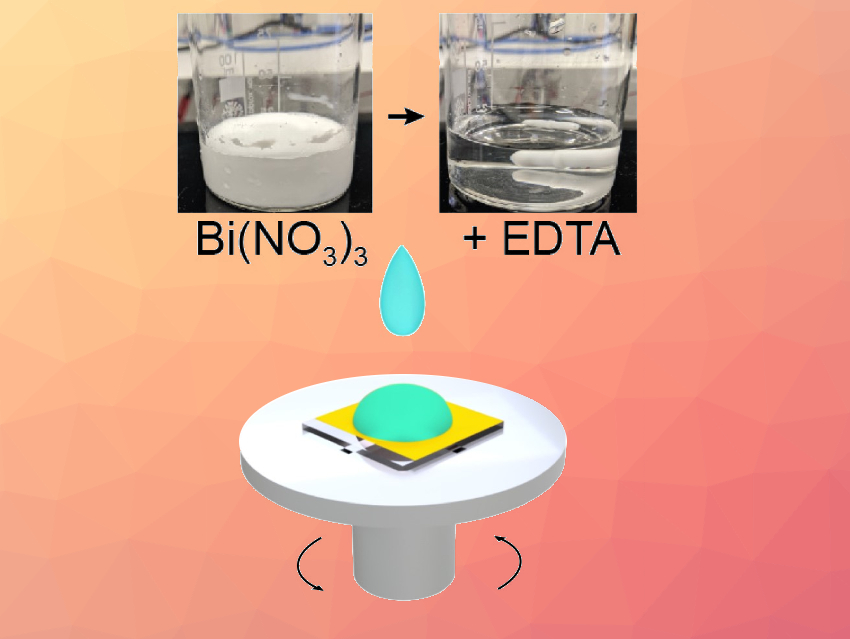Semiconducting oxide films have applications in diverse systems, such as gas sensors, electrocatalysts, and photoelectrodes. Their use in certain types of photoelectrodes, in particular, requires high optical transparency. However, high-performing oxide semiconductors are often nano- or micro-structured, which causes light scattering, and thus, reduces their transparency. Developing methods for the large-scale synthesis of phase-pure, semiconducting metal-oxide thin films with low light scattering has remained a challenge.
Kevin Sivula, Swiss Federal Institute of Technology Lausanne (EPFL), and colleagues have developed a synthesis method that allows the production of transparent films of ternary metal oxides. The team used the ethylenediamine tetraacetic acid (EDTA) ligand to prepare homogeneous solutions of various precursor salts (e.g., Bi(NO3)3 and VO(acac)2, acac = acetylacetonate) in water at near-neutral pH. These solutions were spin-coated (pictured) or spray-deposited onto a substrate. Then they were calcined and annealed to generate uniform, transparent thin films of semiconducting oxides (e.g., BiVO4).
The team used the technique to create thin films of BiVO4, CuFeO2, and ZnFe2O4 as representative, commonly used oxides. The resulting films are optically transparent. The prepared BiVO4 films, for example, have a transmittance of approximately 90 % at 700 nm, compared with 34 % for a “traditional”, electrodeposited BiVO4 film. According to the researchers, the use of non-toxic EDTA as a ligand and water as the solvent makes the process environmentally friendly and interesting for large-scale applications.
- Generalized Synthesis to Produce Transparent Thin Films of Ternary Metal Oxide Photoelectrodes,
Charles Lhermitte, Annalisa Polo, Liang Yao, Florent Boudoire, Nestor Guijarro, Kevin Sivula,
ChemSusChem 2020.
https://doi.org/10.1002/cssc.202000926




